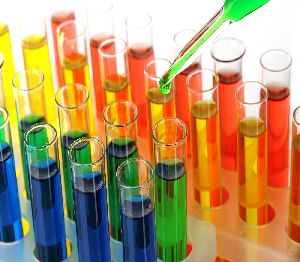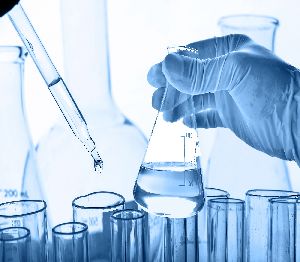Tki Global Inc is known as top Manufacturer, Exporter, Supplier and Retailer of best Dyeing Solutions and Pretreatment Solutions.
Synthetic or manmade fibres & fabrics are generally free from natural impurities which are present in most natural fibres. However sizing agents. spin finish/anti static agent/conning oils /loom stains{grease, lubricants} may be present in synthetic or manmade fibres which may require removal before the material is dyed or finished: Pre-treatment processes include de sizing, scouring, bleaching & wetting which make subsequent dyeing and softening processes easy. Uneven De sizing, scouring, and bleaching in the pre-treatment processes might cause drastic deterioration in the qualities of processed products, such as uneven dyeing and decrease in fastness. Object of Pre-treatment: To Convert fabric from hydrophobic to hydrophilic state. To remove dust, dirt etc. from the fabric. To achieve the degree of desire whiteness. Desizing Agents De sizing is used for removing added impurities in the form of starch and other synthetic size without having any adverse effect on the fibre. It is important that these impurities be removed as efficiently as possible to ensure better realization of further processing. These Desizing agents are formulated based on processing condition and infrastructure . Surfactant can be used in combination with desizing agents to aid the wetting of textile and seize removal. Scouring & Stain removing Scouring of polyester fibre/fabric is an essential treatment in order to obtain a sufficiently hydrophilic fabric. During scouring oils, waxes ,lubricants, grease and other materials are removed from the fibres . For most of the synthetic fibres, mild alkaline conditions in presence of a surfactant are sufficient to remove the impurities listed above. Wetting The wetting agents are used in to increase the water absorbing efficiency of the fabric. They provide fast penetration and wetting of textile fibres and fabric allowing higher pick up with uniform effect. Enhanced Absorbency of treated goods leads to improvements in dye ability, print quality, finish and comfort properties.










Dyeing of Hydrophobic fibres like polyester with disperse dyes is a completely different dye transfer system. The process involves dye transfer transfer from liquid (water) to a solid organic fibre and it takes as following: Dispersion of the dye in the solid phase into water by breaking up into molecules( dissolution of the dye). Adsorption of the dissolved dye from the solution  onto the fibre surface. For achieving good fastness addition of small amounts of dispersing agents. Leads to better exhaustion. Longer dyeing period ensures better rubbing fastness. Shorter dyeing times usually cause less level dyeing. Dye solubility only helpful to an extend, although dyeing rate increases with increasing solubility but up to a certain value with further increase in solubility the dyeing rate actually decreases. Each dye has a favourable dispersing agent & is effective with that agent best. Swelling & Carrier Agents In the case of hydrophobic fibres like polyester the fibre structure is so compact that water is not able to swell fibres as a result minimal amount of water is imbibed in the fibre structure , so slow diffusion of dye takes place : The fibre structure may be opened up by the use of carrier agents. For dyeing polyester fibres at temperatures up to 100 degree without any carrier the diffusion of dye is affected.Therefore use of carrier is recommended. This facilitates the diffusionof the dye molecules. Levelling agents Levelling agents act in a similar manner as the carriers with respect to the interaction with the dye, equilibrium effect and migration effect. If it has good levelling and migration properties, the un evenness caused during initial phase gets levelled out rapidly under dyeing conditions and a level dyeing is obtained. In other words, the levelling capacity of a dye ,is its ability to even out variations in the dye distribution in the substrate. The primary objectives of using levelling agents during dyeing of different substrates are the following To obtain level shades. Depth and tone of the shade should be the same. To get optimum colour value. Reduction Clearing Agents At the end of dyeing process some of the dye particles remain deposited on the surface of the fibres . It is necessary to remove these loosely held dye particles particularly in the medium and heavy shades so that during the laundering stage these dyes do not bleed and tint the light dyed and white clothes.